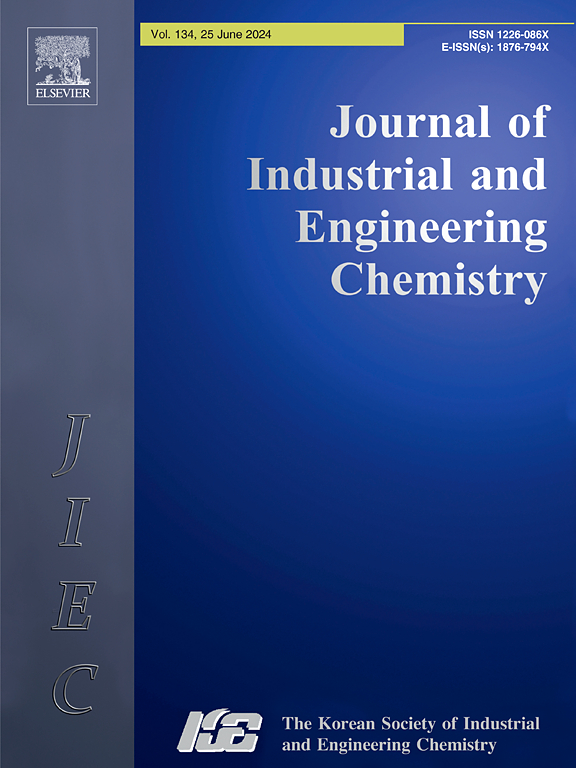Iron removal and valuable metal recovery from spent lithium-ion batteries (LIBs) using solvent extraction after bioleaching
IF 5.9
3区 工程技术
Q1 CHEMISTRY, MULTIDISCIPLINARY
Journal of Industrial and Engineering Chemistry
Pub Date : 2024-10-10
DOI:10.1016/j.jiec.2024.10.013
引用次数: 0
Abstract
Our study investigated the feasibility of solvent extraction for the separation of impurities, specifically aluminum (Al), copper (Cu), and iron (Fe) from simulated leachate with similar composition to real pregnant leach solution (PLS) obtained after the bioleaching of spent lithium-ion batteries (LIBs). The Fe2+ in the Fe-rich PLS was oxidized to Fe3+ by addition of H2O2. Subsequently, Fe3+, Al3+, Cu2+, and Mn2+ were extracted at pH 4.0 using 20 % di-(2-ethylhexyl) phosphoric acid (D2EHPA) as the extractant. At this pH, 99.99 % of Al3+ and Fe3+, 93 % of Cu2+, and 83 % of Mn2+ were successfully extracted. Co-extracted Co2+ was recovered through a two-stages scrubbing process, where it was replaced with Mn2+ using a MnSO4 solution at an O/A ratio of 1:1. Finally, Al3+, Cu2+, and Mn2+ were stripped with 5 M H2SO4, and 99 % Fe3+ was separated by stripping with 100 % aqua regia. Our study presents an approach for effectively separating valuable metals and impurities, particularly Fe, by optimizing the extraction, scrubbing, and stripping stages of solvent extraction for PLS treatment. Moreover, this study emphasizes the need for further research on the pre-separation of Fe and the development of novel extractants and solvents to enhance the treatment of Fe-rich PLS after bioleaching.

求助全文
约1分钟内获得全文
求助全文
来源期刊
CiteScore
10.40
自引率
6.60%
发文量
639
审稿时长
29 days
期刊介绍:
Journal of Industrial and Engineering Chemistry is published monthly in English by the Korean Society of Industrial and Engineering Chemistry. JIEC brings together multidisciplinary interests in one journal and is to disseminate information on all aspects of research and development in industrial and engineering chemistry. Contributions in the form of research articles, short communications, notes and reviews are considered for publication. The editors welcome original contributions that have not been and are not to be published elsewhere. Instruction to authors and a manuscript submissions form are printed at the end of each issue. Bulk reprints of individual articles can be ordered. This publication is partially supported by Korea Research Foundation and the Korean Federation of Science and Technology Societies.

 求助内容:
求助内容: 应助结果提醒方式:
应助结果提醒方式:


